Table of Contents
ToggleIn a world where tech moves faster than a cat chasing a laser pointer, keeping up with software trends can feel like trying to catch smoke with your bare hands. But fear not! Software trend analysis is here to help decode the chaos. By analyzing patterns and shifts in the software landscape, it offers insights that can be the difference between riding the wave of innovation and getting left in the digital dust.
Overview of Software Trend Analysis
Software trend analysis involves examining the ongoing developments within the tech industry. This analysis identifies patterns and shifts in software utilization, guiding individuals and organizations in their strategic decisions. By monitoring usage statistics and performance metrics, analysts highlight emerging technologies and popular frameworks.
Understanding software trends can enhance competitive advantage. Businesses gain insights into user preferences and market demands, enabling them to tailor offerings. Data-driven decision-making often results from careful analysis of trends, leading to improved product development strategies.
The impact of software trend analysis extends to various sectors. For instance, the rise of artificial intelligence influences software design, necessitating adaptations in functionality and user experience. Trends in cloud computing also suggest a shift toward more scalable software solutions, enhancing flexibility for businesses.
Analysts often leverage tools and methodologies to interpret data effectively. Techniques such as data mining, statistical analysis, and visualization aid in uncovering meaningful insights from complex data sets. These insights reveal not just current trends but also predict future developments within the software landscape.
Investing in software trend analysis proves beneficial for long-term growth. Organizations that stay attuned to shifts can pivot their strategies and embrace innovation. Staying informed reduces the risk of obsolescence, ensuring a position at the forefront of technological advancements.
Key Metrics in Software Trend Analysis

Analyzing software trends involves focusing on specific key metrics that reflect changes and patterns in the industry. Understanding these metrics allows organizations to make informed decisions and better respond to market dynamics.
Adoption Rates
Adoption rates measure how quickly users embrace new software technologies. Higher adoption rates indicate strong interest and usability among users. Analysts often track the transition of businesses to cloud platforms or new programming languages. For example, a 25% increase in cloud service adoption over a year can show a significant shift in user preference. Monitoring these rates helps companies identify emerging technologies that can drive competitive advantage.
Usage Trends
Usage trends reflect how software tools experience engagement and effectiveness over time. Often, businesses analyze daily active users and session durations to gauge interest levels. An increase of 15% in daily active users within three months suggests user satisfaction and software relevance. Organizations frequently adjust features according to these insights, ensuring they meet evolving needs. Observing these trends enables companies to tailor their offerings and enhance user experiences in a competitive marketplace.
Tools for Software Trend Analysis
Software trend analysis relies heavily on effective tools to collect and analyze relevant data. Utilizing the right tools can enhance insights and strategic decisions.
Data Collection Tools
Data collection tools facilitate the gathering of relevant metrics and usage statistics. Google Analytics offers robust reporting features for tracking user engagement. SimilarWeb provides insights into competitor traffic and industry benchmarking. SurveyMonkey allows for custom user feedback, capturing preferences directly from the audience. Hotjar visualizes user behavior through heatmaps, helping identify interaction patterns. Collectively, these tools enable businesses to understand trends and adapt quickly.
Analytical Tools
Analytical tools interpret the collected data, providing actionable insights. Tableau enables users to visualize complex datasets through interactive dashboards. R and Python are popular programming languages for statistical analysis and data modeling. Google Data Studio simplifies the reporting process, allowing for real-time data visualization. Microsoft Power BI integrates seamlessly with various data sources, enhancing access to business intelligence. These tools aid in making informed decisions based on emerging software trends.
Case Studies in Software Trend Analysis
Cases highlighting software trend analysis illustrate the real-world impact of understanding technology’s evolving landscape. Analysis of trends yields insights that shape organizational strategies across various sectors.
Successful Implementations
Case studies show how companies leverage trend analysis to drive growth. A leading cloud service provider reported a 30% revenue increase by adopting AI-driven features that customers specifically sought. Another software startup utilized data from user feedback to enhance its mobile application, resulting in a 40% rise in downloads. By monitoring customer preferences, both organizations stayed ahead of market demands. Rapid iterations based on trend analysis led to improved user experiences and competitive advantages, demonstrating the effectiveness of this approach.
Lessons Learned
Lessons from these implementations highlight the importance of adaptable strategies. Organizations often faced unexpected challenges when misinterpreting trends, which underscored the necessity of accurate data interpretation. One healthtech company discovered that focusing solely on high adoption rates didn’t guarantee long-term engagement, revealing that usage metrics hold critical insight. Continuous adjustment based on performance metrics ensured better alignment with user expectations. Therefore, companies that learn from both successes and setbacks refine their trend analysis processes, ultimately fostering sustained growth.
Future Directions in Software Trend Analysis
Emerging technologies challenge software trend analysis by reshaping methodologies and processes. Companies prioritize artificial intelligence to enhance predictive capabilities, making analysis more accurate. Enhanced machine learning algorithms can process large data sets, transforming raw data into actionable insights.
Automation plays a critical role in streamlining data collection, reducing manual efforts needed to monitor trends. With tools like Google Analytics and Microsoft Power BI, businesses gain rapid access to real-time metrics. Shortened decision-making cycles facilitate quick adjustments to strategies based on current data.
User experience stands at the forefront of future analysis. Focusing on user journeys and feedback offers a deeper understanding of engagement. Insights derived from user interaction patterns can drive significant software enhancements.
Cloud-native platforms increase collaboration among teams, enabling shared insights across departments. Seamless integration of analytical tools boosts the efficiency of trend analysis efforts. Combining information from various sources results in richer, multidimensional insights.
Data privacy concerns must be addressed as software trend analysis evolves. Regulatory changes impact data collection practices, demanding businesses to adapt their methodologies. Organizations maintaining transparency with users regarding data use can foster trust and compliance.
Forecasting capabilities will become more sophisticated, supported by advancements in data analytics. Predictive models integrated with trend analysis will empower organizations to anticipate shifts in user behavior effectively. Collaboration across industry sectors can provide robust frameworks to tackle emerging challenges.
Overall, the landscape of software trend analysis is evolving rapidly. Analytics will integrate with development processes, enabling organizations to refine products continuously. Staying ahead of these trends ensures relevance in the competitive software market.
Staying ahead in the competitive software landscape demands a proactive approach to trend analysis. By leveraging data-driven insights organizations can make informed decisions that align with user preferences and market dynamics. The integration of advanced tools and methodologies enhances the ability to interpret complex data sets effectively.
As technology continues to evolve rapidly embracing software trend analysis isn’t just beneficial; it’s essential for long-term growth. Organizations that adapt their strategies based on accurate trend interpretations will not only enhance their offerings but also foster innovation while mitigating the risk of obsolescence. The future of software development lies in the hands of those who prioritize continuous learning and adaptability in their approach to emerging trends.






